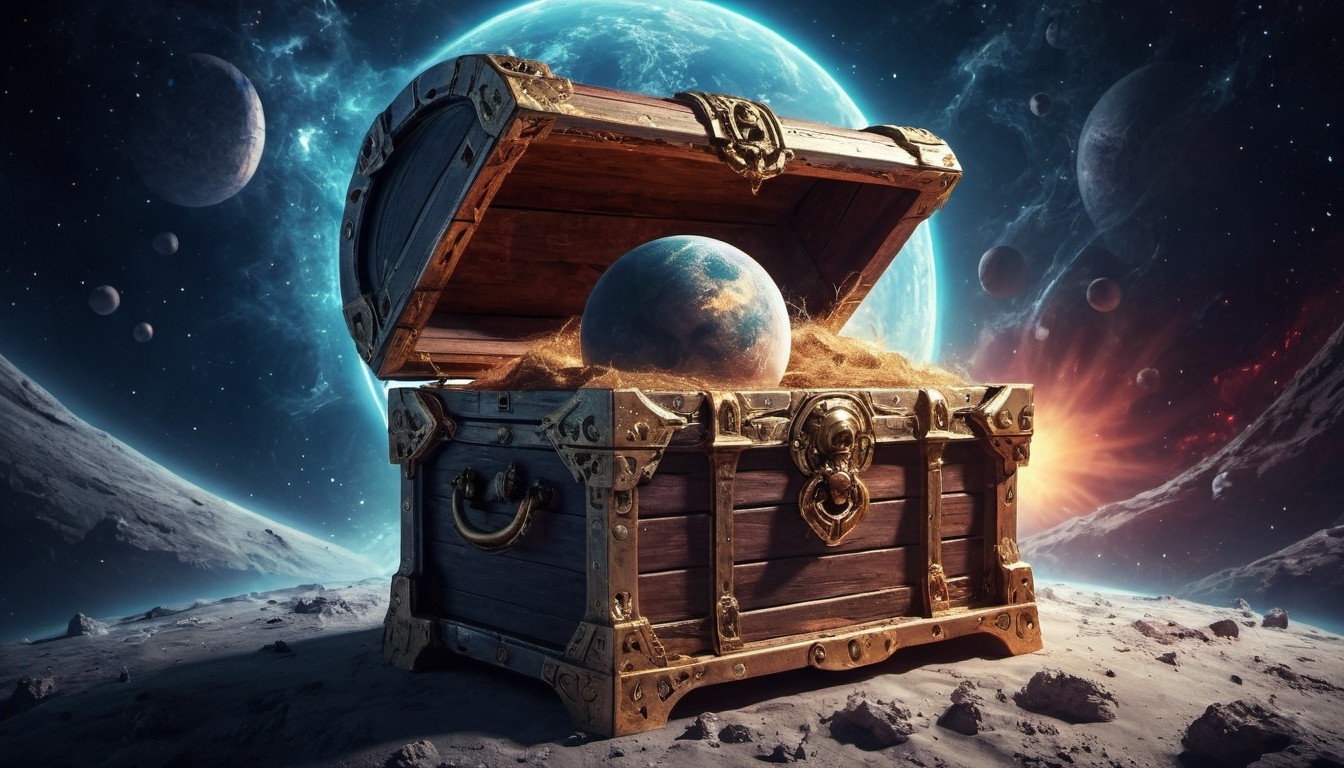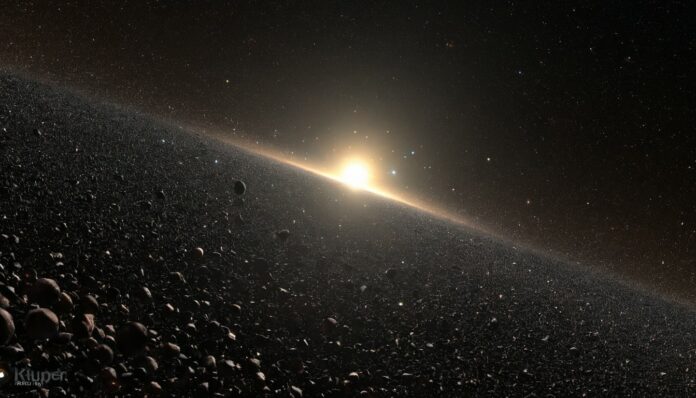The Kuiper Belt is an asteroid belt located between the orbits of Mars and Jupiter. However, it’s no ordinary belt—it’s much wider, about 15-25 times wider than usual, and significantly more massive. It sits practically at the edge of our Solar System, 50 times farther from the Sun than Earth.
Interesting fact: Objects in the Kuiper Belt are predominantly made of ice blocks covered with a dense layer of regolith, whereas other asteroid belts consist of various rock types with a mix of ice and metal. The ice can be not only water but also methane or ethylene—almost any gas can freeze in the cold vacuum of space.
Anomalies in the orbits of several celestial bodies in the Kuiper Belt have led astrophysicists to speculate about the possible presence of another large planet nearby, yet to be discovered. The potential existence of a ninth planet beyond the Kuiper Belt has been indirectly suggested several times, although there’s no direct evidence yet.
Interesting Facts About Kuiper Belt:
- Pluto is the largest known object in the Kuiper Belt. For a long time, Eris held the title, but in 2015, astronomers found that while this dwarf planet exceeds Pluto in mass, it’s slightly smaller in size.
- Besides Eris and Pluto, other relatively large objects reside in the Kuiper Belt. Approximately a thousand of them have been studied so far, but science continues to make new discoveries. Some astronomers suggest that there may be many more significantly large objects measuring over 1000 kilometers, around 70,000 medium-sized objects with diameters of 100 kilometers, and roughly 450,000 relatively small objects measuring between 50-100 kilometers.

- Some astronomers believe that certain celestial objects in the Solar System, such as one of Saturn’s moons—Phoebe, and one of Neptune’s moons—Triton, may have originated in the Kuiper Belt. Subsequently, they were displaced from their orbits by the powerful gravitational forces of the gas giants.
- Not long ago, scientists thought that most comets primarily originate from the Kuiper Belt. However, this hypothesis is no longer widely supported by the scientific community. Nowadays, the primary source of incoming long-period comets is believed to be the Oort Cloud, discovered in 1950.
- About several hundred objects in the Kuiper Belt are in what’s called orbital resonance with the planet Neptune, despite being at a considerable distance from it.
- Beyond the Kuiper Belt lies the scattered disk, which consists of remnants of materials that formed the Solar System. Beyond the belt, right at the gravitational boundary of the Solar System, lies the Oort Cloud, whose existence has yet to be confirmed.
- Some scientists are ready to classify certain Kuiper Belt objects as dwarf planets, as they meet the criteria (for example, Sedna). The largest and most well-known Kuiper Belt objects already classified as dwarf planets include Pluto, Sedna, Haumea, Makemake, and Eris.
- Some Kuiper Belt objects have highly eccentric orbits, taking them far beyond the main region of the belt. This dynamic behavior suggests complex gravitational interactions with outer planets and other celestial bodies.
- The discovery of Pluto in 1930 by Clyde Tombaugh was a significant milestone in astronomy and led to the recognition of the Kuiper Belt as a distinct region of the Solar System.
The New Horizons spacecraft provided the first close-up images of Pluto and its moons in 2015, offering unprecedented insights into the geology, composition, and atmosphere of these distant worlds within the Kuiper Belt. - Scientists study the composition of Kuiper Belt objects to better understand the conditions that prevailed during the early stages of Solar System formation and the role of icy bodies in delivering volatiles to inner planets like Earth.
- Some Kuiper Belt objects exhibit peculiar surface features, such as craters, valleys, and ridges, indicating geological processes at work despite the extreme cold and low solar energy they receive.
- The study of Kuiper Belt objects has implications for our understanding of exoplanetary systems and the potential for habitable environments beyond our Solar System, as similar icy bodies may exist in other planetary systems.
- Future missions, such as the proposed New Horizons 2 mission, aim to explore additional Kuiper Belt objects to unravel more mysteries about these distant worlds and their significance in the broader context of planetary science.
